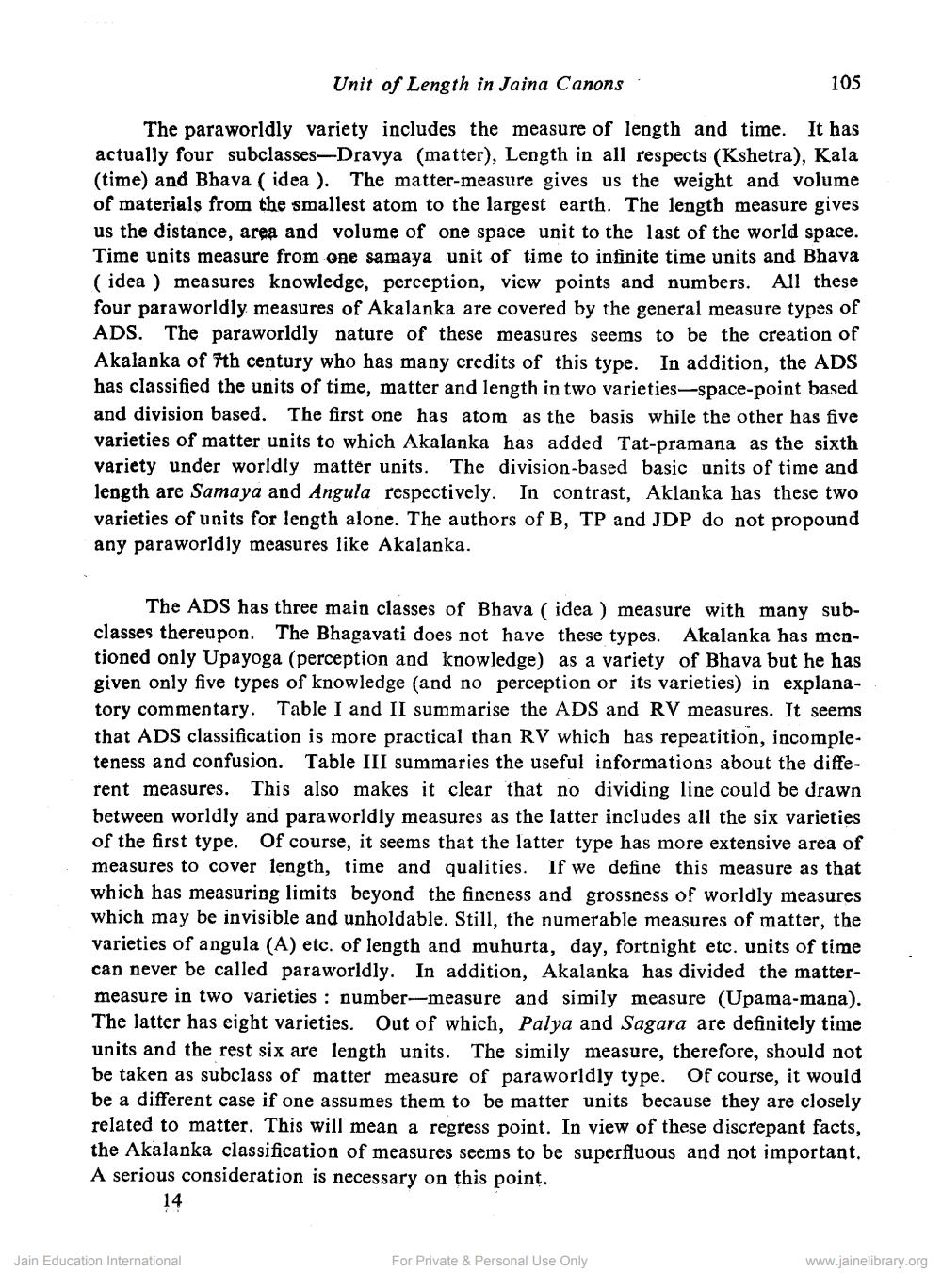________________
Unit of Length in Jaina Canons
105
The paraworldly variety includes the measure of length and time. It has actually four subclasses-Dravya (matter), Length in all respects (Kshetra), Kala (time) and Bhava (idea). The matter-measure gives us the weight and volume of materials from the smallest atom to the largest earth. The length measure gives us the distance, area and volume of one space unit to the last of the world space. Time units measure from one samaya unit of time to infinite time units and Bhava (idea) measures knowledge, perception, view points and numbers. All these four paraworldly measures of Akalanka are covered by the general measure types of ADS. The paraworldly nature of these measures seems to be the creation of Akalanka of 7th century who has many credits of this type. In addition, the ADS has classified the units of time, matter and length in two varieties-space-point based and division based. The first one has atom as the basis while the other has five varieties of matter units to which Akalanka has added Tat-pramana as the sixth variety under worldly matter units. The division-based basic units of time and length are Samaya and Angula respectively. In contrast, Aklanka has these two varieties of units for length alone. The authors of B, TP and JDP do not propound any paraworldly measures like Akalanka.
The ADS has three main classes of Bhava (idea) measure with many subclasses thereupon. The Bhagavati does not have these types. Akalanka has mentioned only Upayoga (perception and knowledge) as a variety of Bhava but he has given only five types of knowledge (and no perception or its varieties) in explanatory commentary. Table I and II summarise the ADS and RV measures. It seems that ADS classification is more practical than RV which has repeatition, incompleteness and confusion. Table III summaries the useful informations about the different measures. This also makes it clear that no dividing line could be drawn between worldly and paraworldly measures as the latter includes all the six varieties of the first type. Of course, it seems that the latter type has more extensive area of measures to cover length, time and qualities. If we define this measure as that which has measuring limits beyond the fineness and grossness of worldly measures which may be invisible and unholdable. Still, the numerable measures of matter, the varieties of angula (A) etc. of length and muhurta, day, fortnight etc. units of time can never be called paraworldly. In addition, Akalanka has divided the mattermeasure in two varieties: number-measure and simily measure (Upama-mana). The latter has eight varieties. Out of which, Palya and Sagara are definitely time units and the rest six are length units. The simily measure, therefore, should not be taken as subclass of matter measure of paraworldly type. Of course, it would be a different case if one assumes them to be matter units because they are closely related to matter. This will mean a regress point. In view of these discrepant facts, the Akalanka classification of measures seems to be superfluous and not important. A serious consideration is necessary on this point.
14
Jain Education International
For Private & Personal Use Only
www.jainelibrary.org




